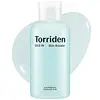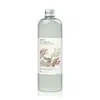Torriden Dive-In Low Molecular Hyaluronic Acid Skin Booster Versus Lindsay&Cos Amazing Multi Ampoule
What's inside
What's inside
 Key Ingredients
Key Ingredients

 Benefits
Benefits

 Concerns
Concerns

 Ingredients Side-by-side
Ingredients Side-by-side

Water
Skin ConditioningButylene Glycol
HumectantGlycerin
Humectant1,2-Hexanediol
Skin ConditioningCaprylic/Capric Triglyceride
MaskingMalachite Extract
AntioxidantCeramide NP
Skin ConditioningPhytosphingosine
Skin ConditioningAllantoin
Skin ConditioningPanthenol
Skin ConditioningSodium Hyaluronate
HumectantHydrolyzed Hyaluronic Acid
HumectantSodium Acetylated Hyaluronate
HumectantSodium Hyaluronate Crosspolymer
HumectantHydrolyzed Sodium Hyaluronate
Skin ConditioningTrehalose
HumectantHamamelis Virginiana Leaf Extract
Skin ConditioningChamomilla Recutita Flower Extract
MaskingGlycereth-26
HumectantPentylene Glycol
Skin ConditioningGlyceryl Acrylate/Acrylic Acid Copolymer
HumectantPvm/Ma Copolymer
Emulsion StabilisingC14-22 Alcohols
Emulsion StabilisingC12-20 Alkyl Glucoside
EmulsifyingAcrylates/C10-30 Alkyl Acrylate Crosspolymer
Emulsion StabilisingXanthan Gum
EmulsifyingTromethamine
BufferingDisodium EDTA
Ethylhexylglycerin
Skin ConditioningScutellaria Baicalensis Root Extract
AstringentPaeonia Suffruticosa Root Extract
Skin ProtectingWater, Butylene Glycol, Glycerin, 1,2-Hexanediol, Caprylic/Capric Triglyceride, Malachite Extract, Ceramide NP, Phytosphingosine, Allantoin, Panthenol, Sodium Hyaluronate, Hydrolyzed Hyaluronic Acid, Sodium Acetylated Hyaluronate, Sodium Hyaluronate Crosspolymer, Hydrolyzed Sodium Hyaluronate, Trehalose, Hamamelis Virginiana Leaf Extract, Chamomilla Recutita Flower Extract, Glycereth-26, Pentylene Glycol, Glyceryl Acrylate/Acrylic Acid Copolymer, Pvm/Ma Copolymer, C14-22 Alcohols, C12-20 Alkyl Glucoside, Acrylates/C10-30 Alkyl Acrylate Crosspolymer, Xanthan Gum, Tromethamine, Disodium EDTA, Ethylhexylglycerin, Scutellaria Baicalensis Root Extract, Paeonia Suffruticosa Root Extract
Water
Skin ConditioningDipropylene Glycol
HumectantAlgin
MaskingHydroxyethylcellulose
Emulsion Stabilising1,2-Hexanediol
Skin ConditioningHydroxyacetophenone
AntioxidantPEG-60 Hydrogenated Castor Oil
EmulsifyingDisodium EDTA
Cymbopogon Schoenanthus Oil
MaskingPolyglyceryl-3 Methylglucose Distearate
EmulsifyingButylene Glycol
HumectantGlycerin
HumectantTotarol
AntioxidantPearl Extract
AntioxidantGalactomyces Ferment Filtrate
HumectantBifida Ferment Lysate
Skin ConditioningAscorbic Acid
AntioxidantNiacinamide
SmoothingAdenosine
Skin ConditioningSaururus Chinensis Extract
Skin ConditioningMelaleuca Alternifolia Leaf Extract
PerfumingCentella Asiatica Extract
CleansingPortulaca Oleracea Extract
Skin ConditioningScutellaria Baicalensis Root Extract
AstringentHamamelis Virginiana Leaf Extract
Skin ConditioningBambusa Vulgaris Water
Skin ConditioningDipotassium Glycyrrhizate
HumectantWater, Dipropylene Glycol, Algin, Hydroxyethylcellulose, 1,2-Hexanediol, Hydroxyacetophenone, PEG-60 Hydrogenated Castor Oil, Disodium EDTA, Cymbopogon Schoenanthus Oil, Polyglyceryl-3 Methylglucose Distearate, Butylene Glycol, Glycerin, Totarol, Pearl Extract, Galactomyces Ferment Filtrate, Bifida Ferment Lysate, Ascorbic Acid, Niacinamide, Adenosine, Saururus Chinensis Extract, Melaleuca Alternifolia Leaf Extract, Centella Asiatica Extract, Portulaca Oleracea Extract, Scutellaria Baicalensis Root Extract, Hamamelis Virginiana Leaf Extract, Bambusa Vulgaris Water, Dipotassium Glycyrrhizate
 Reviews
Reviews

Ingredients Explained
These ingredients are found in both products.
Ingredients higher up in an ingredient list are typically present in a larger amount.
1,2-Hexanediol is a synthetic liquid and another multi-functional powerhouse.
It is a:
- Humectant, drawing moisture into the skin
- Emollient, helping to soften skin
- Solvent, dispersing and stabilizing formulas
- Preservative booster, enhancing the antimicrobial activity of other preservatives
Butylene Glycol (or BG) is used within cosmetic products for a few different reasons:
Overall, Butylene Glycol is a safe and well-rounded ingredient that works well with other ingredients.
Though this ingredient works well with most skin types, some people with sensitive skin may experience a reaction such as allergic rashes, closed comedones, or itchiness.
Learn more about Butylene GlycolDisodium EDTA plays a role in making products more stable by aiding other preservatives.
It is a chelating agent, meaning it neutralizes metal ions that may be found in a product.
Disodium EDTA is a salt of edetic acid and is found to be safe in cosmetic ingredients.
Learn more about Disodium EDTAGlycerin is already naturally found in your skin. It helps moisturize and protect your skin.
A study from 2016 found glycerin to be more effective as a humectant than AHAs and hyaluronic acid.
As a humectant, it helps the skin stay hydrated by pulling moisture to your skin. The low molecular weight of glycerin allows it to pull moisture into the deeper layers of your skin.
Hydrated skin improves your skin barrier; Your skin barrier helps protect against irritants and bacteria.
Glycerin has also been found to have antimicrobial and antiviral properties. Due to these properties, glycerin is often used in wound and burn treatments.
In cosmetics, glycerin is usually derived from plants such as soybean or palm. However, it can also be sourced from animals, such as tallow or animal fat.
This ingredient is organic, colorless, odorless, and non-toxic.
Glycerin is the name for this ingredient in American English. British English uses Glycerol/Glycerine.
Learn more about GlycerinHamamelis Virginiana Leaf Extract comes from the witch hazel plant.
Witch Hazel is an astringent, anti-inflammatory, antioxidant, and antibacterial ingredient.
The tannin in witch hazel has a drying effect when used on skin and constricts proteins. This helps minimize the look of large pores. The presence of tannins and fragrance may be sensitizing.
The catechins in witch hazel have anti-inflammatory properties while the gallic acid is antibacterial.
Indigenous groups have used witch hazel to help treat inflammation, which was then used by early settlers to North America.
Learn more about Hamamelis Virginiana Leaf ExtractScutellaria Baicalensis Root Extract comes from the Baikal skullcap or Chinese skullcap plant. This plant is native to Northeast Asia and can be found in China, Mongolia, Korea, and Siberia.
In cosmetics, Scutellaria Baicalensis Root Extract provides antioxidant and anti-inflammatory benefits. This is due to the flavonoid composition of Scutellaria Baicalensis Root Extract.
In Chinese traditional folk medicine, Scutellaria Baicalensis Root Extract is used to help treat lung issues and hypertension.
Learn more about Scutellaria Baicalensis Root ExtractWater. It's the most common cosmetic ingredient of all. You'll usually see it at the top of ingredient lists, meaning that it makes up the largest part of the product.
So why is it so popular? Water most often acts as a solvent - this means that it helps dissolve other ingredients into the formulation.
You'll also recognize water as that liquid we all need to stay alive. If you see this, drink a glass of water. Stay hydrated!
Learn more about Water